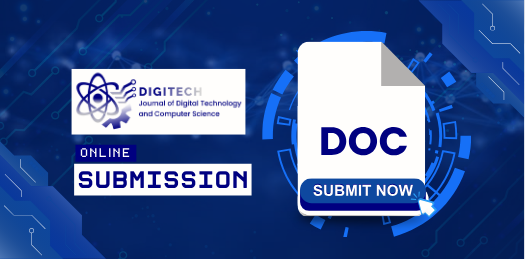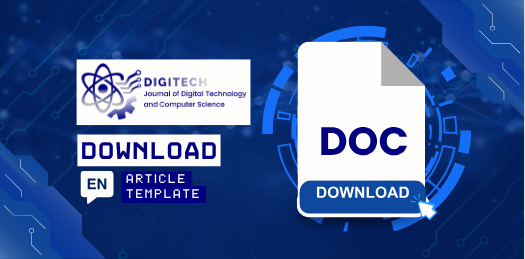Task Monitoring Information System: Case Study of Task Minder Implementation in PTIK A Class Students Class 2022 Makassar State University
DOI:
https://doi.org/10.61220/digitech.v2i1.20242Keywords:
Task Less, Task Management, Information System, EfficiencyAbstract
In the digital age, students face increasing demands to manage various academic assignments and deadlines effectively. Manual task management often leads to missed deadlines, irregularities, and reduced productivity. Therefore, a structured, easy-to-use task monitoring system is needed to support learning efficiency. This research explores Task Minder, a task monitoring system that helps individuals and organizations manage tasks in a structured manner. With user-friendly features such as account creation, task editing, status tracking, and automatic reminders, Task Minder aims to increase productivity and efficiency. A descriptive method is used to describe and analyze this system, through a whitebox approach in the creation of Software Requirements Specification (SRS) documents. Data was collected through interviews, observations, and documentation, then analyzed qualitatively using thematic analysis methods. The results show an increase in user productivity, but also identify some limitations that need to be considered for effective use. Overall, Task Minder makes a real contribution as a digital solution in academic task management, helping students organize work more efficiently, responsively, and integrated with learning needs.
References
[1] Ana Nurfadilah and Ilham, “The Implementation Of Management Information Systems In The Digital Era: Challenges And Solutions,” JCI, vol. 4, no. 2, pp. 68–87, Dec. 2024, doi: 10.54066/jci.v4i2.510.
[2] F. R. Dhanias, D. A. Kusumastuti, H. D. Sylvatri, Z. S. Darmawan, and B. Efendi, “Stepping Forward in the Digital Era: The Contribution of Business Information Systems in Responding to Global Entrepreneurship Challenges,” jmp, vol.
13, no. 1, pp. 366–372, May 2024, doi: 10.33395/jmp.v13i1.13668.
[3] A. Prasetya Nugraha, H. Agus Romi, M. Yudi Wisra, and S. Suriani, “Government Information Systems in the Digitalization Era 4.0 in Increasing the Value of Human Resources.,” SAID IT, vol. 5, no. 6, pp. 2419–2429, Sept. 2024, doi: 10.38035/dijemss.v5i6.3194.
[4] N. T. Singh, Preeti, R. Kumar, A. Choubey, Suresh, and J. Singh, “An All-Inclusive Daily Task Tracker App for Enhancing College Student Productivity,” in 2024 15th International Conference on Computing Communication and Networking Technologies (ICCCNT), Kamand, India: IEEE, June 2024, pp. 1–5. doi: 10.1109/ICCCNT61001.2024.10724109.
[5] P. Nagalapur and V. Hittalamani, “Complete Task Tracking System For Software Company Using Python,” IRJMETS, Sept. 2023, doi: 10.56726/IRJMETS44485.
[6] F. A. Nurzi and K. Ab Wahab, “Web-Based Student Task Management System,” EASTJ, vol. 1, no. 1, pp. 50–56, July 2022, doi: 10.37698/eastj.v1i1.119.
[7] M. Krishna, B. Gaur, A. Verma, and P. Jalote, “Using LLMs in Software Requirements Specifications: An Empirical Evaluation,” in 2024 IEEE 32nd International Requirements Engineering Conference (RE), June 2024, pp. 475–483. doi: 10.1109/RE59067.2024.00056.
[8] X. Franch, C. Palomares, C. Quer, P. Chatzipetrou, and T. Gorschek, “The state-of-practice in requirements specification: an extended interview study at 12 companies,” Requirements Eng, vol. 28, no. 3, pp. 377–409, Sept. 2023, doi: 10.1007/s00766-023-00399-7.
[9] H. S. Dar, S. Imtiaz, and M. I. Lali, “Reducing Requirements Ambiguity via Gamification: Comparison with Traditional Techniques,” Computational Intelligence and Neuroscience, vol. 2022, pp. 1–12, July 2022, doi: 10.1155/2022/3183411.
[10] J. E. Kosie and C. Lew‐Williams, “Open science considerations for descriptive research in developmental science,” Infant and Child Development, vol. 33, no. 1, p. e2377, Jan. 2024, doi: 10.1002/icd.2377.
[11] C. Dongmo, “A Review of Non-Functional Requirements Analysis Throughout the SDLC,” Computers, vol. 13, no. 12, p. 308, Nov. 2024, doi: 10.3390/computers13120308.
[12] Agri Fina and H. B. Santoso, “Usability Evaluation and Interface Design Improvements Recommendations for Self-Service System of a Help Center in an E-commerce Mobile Application,” ijcs, vol. 13, no. 4, Aug. 2024, doi: 10.33022/ijcs.v13i4.4258.
[13] A. G. Pradnya Sidhawara, “Evaluation of UAJY Learning Management System’s Usability using USE Questionnaire and Eye-tracking,” Indonesian J. of Inf. Syst., vol. 4, no. 2, Feb. 2022, doi: 10.24002/ijis.v4i2.5273.
[14] Z. Gao, J. Wang, and M. Wang, “Mapping the Information Journey: Unveiling the Documentation Experience of Software Developers in China,” 2023.
[15] A. A. Winecoff and M. Bogen, “Improving governance outcomes through AI documentation: Bridging theory and practice,” Dec. 09, 2024, arXivarXiv:2409.08960. doi:10.48550/arXiv.2409.08960.
[16] M. W. Yasykur and Devi Ajeng Efrilianda, “Evaluation of User Interface and User Experience on Solo Destination App using System Usability Scale and Human-centered Design Methods,” J. Adv. Inf. Syst. Tech, vol. 6, no. 2, pp. 183–199, Jan. 2025, doi: 10.15294/jaist.v6i2.4185.
[17] Z. K. A. Baizal, D. H. Widyantoro, and N. U. Maulidevi, “Factors Influencing User’s Adoption of Conversational Recommender System Based on Product Functional Requirements,” TELKOMNIKA, vol. 14, no. 4, p. 1575, Dec. 2016, doi: 10.12928/telkomnika.v14i4.4234.
[18] N. Hussin and S. F. M. Yatim, “Evaluating the Applicability of the Functional Requirements Developed on the Practices of Records Management System in the Malaysian Court of Appeal,” vol. 9, no. 4, 2017.









 Email:
Email: 
